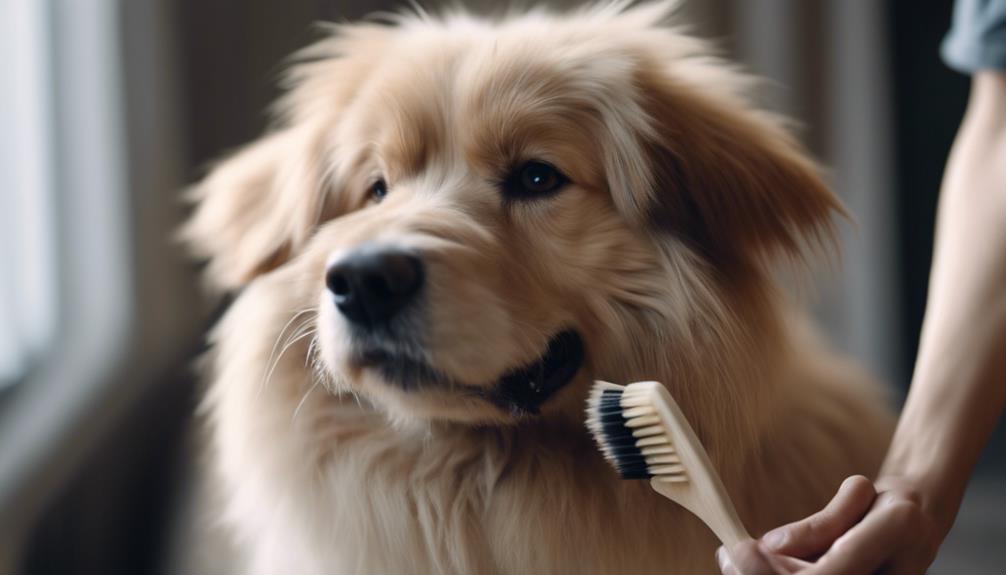Maintain your dog's coat by brushing in the direction of hair growth using a slicker brush or undercoat rake. Use lukewarm water and dog-specific shampoo for baths, patting dry gently after. Trim nails in small increments with sharp clippers. Clean ears with a vet-approved solution without going too deep. Prioritize dental health with chew toys and regular vet checkups. These tips ensure optimal pet health and well-being.
Key Takeaways
- Use high-quality slicker brush or undercoat rake for optimal coat maintenance.
- Employ proper bathing techniques with lukewarm water and dog-specific products.
- Trim nails in small increments with sharp clippers and have styptic powder on hand.
- Regularly clean ears with vet-approved solution and avoid deep insertion.
- Prioritize dental care with chew toys and regular vet checkups for overall health.
Brushing Techniques

To maintain your dog's coat in optimal condition, regularly employing proper brushing techniques is essential. Grooming essentials like a high-quality slicker brush or undercoat rake can help keep your dog's coat free of tangles and mats. Begin by gently brushing your dog's fur in the direction of hair growth, starting from the head and moving towards the tail. Be sure to pay special attention to areas prone to matting, such as behind the ears and under the legs.
Shedding solutions can also be a part of your grooming routine. Using a deshedding tool can help remove loose fur, reducing the amount of hair your dog sheds around your home. Brushing not only helps with shedding but also promotes healthy skin and coat by distributing natural oils. Regular grooming sessions create a bonding experience between you and your furry friend while ensuring they look and feel their best.

